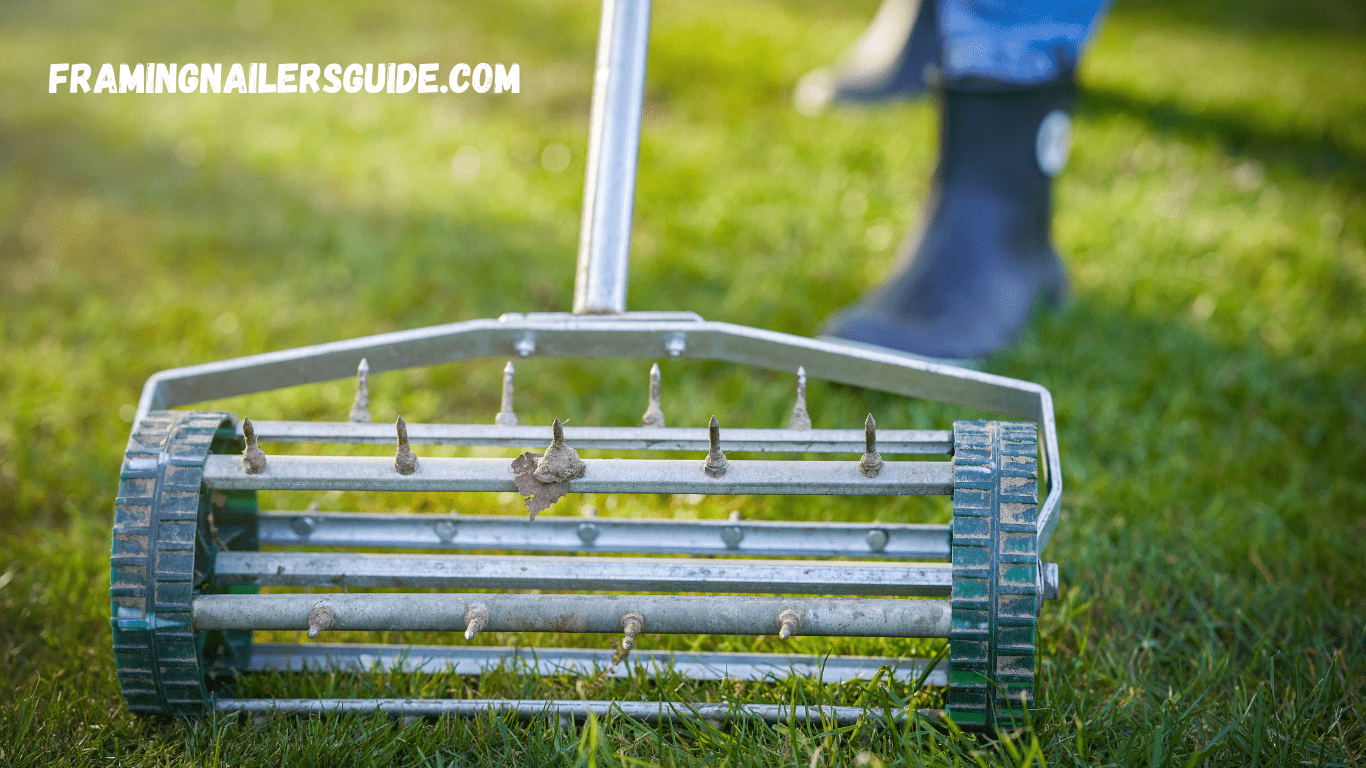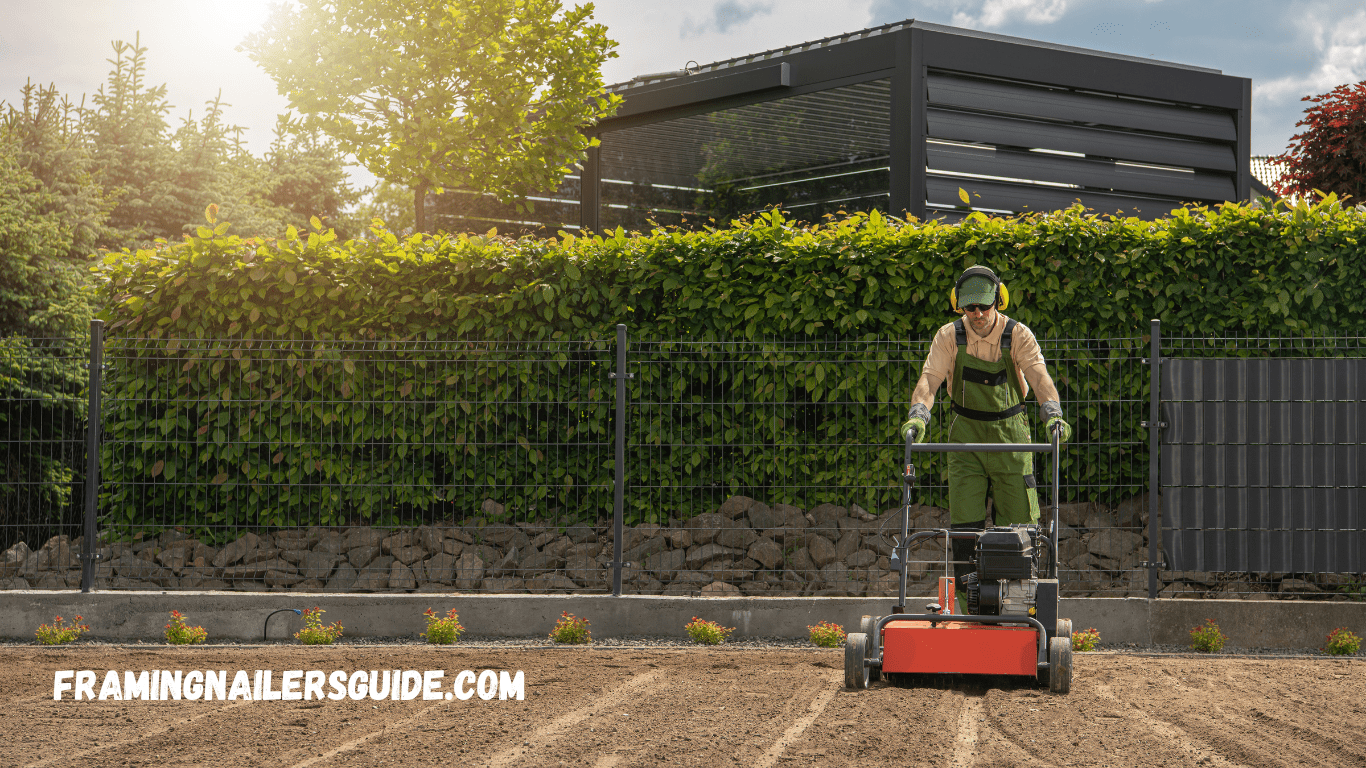
Table of Contents
- 1 What is Aeration?
- 2 Why Aerate a Lawn?
- 3 Aerating Tools: Plug Aerator VS Spike Aerator
- 4 When Is the Best Time to Aerate Your Lawn?
- 5 Toxic Lawn Care Considerations
- 6 Frequently Asked Questions
- 6.1 What Does an Aerator Do?
- 6.2 When Is It Too Late to Aerate and Overseed a Lawn?
- 6.3 When shouldn’t you aerate your lawn?
- 6.4 How long should grass be for aeration?
- 6.5 Can I do a weed control application after seeding and aeration?
- 6.6 How long for lawn aeration to work?
- 6.7 When to Aerate Your Yard?
- 6.8 When is the best time to aerate your lawn?
- 7 Keep Your Lawn Thriving
Last Updated on December 10, 2024 by John Patterson
Every homeowner dreams of a lush, green lawn but keeping it that way is more than just mowing weekly. Lawn aeration is one of the most underutilized strategies for getting that lush yard. But what is aeration, exactly, and how can you tell when to aerate lawn? This guide explains all you need to know to keep your lawn going strong.
What is Aeration?

Lawn aeration, also known as hole hole-punching the soil, allows air, water and nutrients to reach the roots. Professional aerators usually make these holes with special equipment. Regular aeration creates healthier, more robust grass by improving soil structure and creating ideal conditions for the grass to grow.
If you’ve ever had to deal with patchy grass, dry skin or uneven growth on your lawn, aeration may be the secret weapon you’ve been missing.
Why Aerate a Lawn?

There are several reasons a lawn may require aeration. Here are some signs that may indicate it is time for yard aeration:
Dry and/or Hard Soil
Soil that is dry and compacted prevents water, air, and nutrients from accessing the roots. This causes grass to stretch and grow weak. Aeration loosens up the soil, which can promote a healthier lawn.
Uneven Growth
Aeration can encourage even grass growth by improving the distribution of nutrients to all areas — something that’s especially useful if certain parts of your lawn grow unevenly while others are relatively thin or brown.
Poor Drainage
Do you have water pooling on your lawn every time it rains? The culprit behind poorly draining lawns is often soil compaction. Aeration creates enough routes for the water to make its way into the ground instead of sitting on top.
Excessive Thatch
Thatch is a thick layer of dead grass and organic matter that sits on top of the soil. But when this layer gets too thick, it chokes the roots. Aeration penetrates the thatch, allowing the lawn to breathe.
High Traffic
If your lawn takes a beating from foot traffic or is a children’s or pets’ play yard, compact soil is likely forming under the surface. Aeration loosens that compaction and helps with nutrient absorption.
Aerating Tools: Plug Aerator VS Spike Aerator

There are two main types of aerating tools, and the decision is based on how healthy your lawn is:
Plug Aerator
And with a tool that extracts small cylinders of soil (plugs) from your yard, it can be very effectively reduced. It’s perfect for thickly packed lawns.
Spike Aerator
This tool digs holes in the soil but does not extract any material. Less effective for compact soil, but quicker and easier than core aeration for light aeration.
Each of those tools plays an important role, but if you have a lawn that suffers badly from compaction, the plug aerator is the best choice.
When Is the Best Time to Aerate Your Lawn?

In the case of aerating your lawn, timing is everything. Here’s a guide to when to aerate different grass types:
Cool-season grasses (these include Kentucky bluegrass, fescue):
Aerate in early spring or early fall when the grass is growing actively.
Warm-season grasses such as Bermuda grass and zoysia.blue-line-bieb:
Aerate in late spring or early summer when growth is at its highest.
Aerating while grass is actively growing will help it recover faster and give you better results.
Aerate Moist Soil in the Morning
For best aeration results, be sure the soil is moist. Dry soil is difficult to perforate, and overly soggy soil can make a muddy mess. Aim to aerate in the morning, following a light rain or once you’ve watered the lawn the day before. Wet soil allows aerating implements to easily penetrate and make healthy, clean perforations.
Toxic Lawn Care Considerations
Aerating can be most effective when incorporated into other lawn care practices. Here’s how to get the most out of it:
Weed Control
Aerate the lawn before treating it for weeds. Aerating a lawn where weeds are already in the mix can disperse seeds and ensure a larger problem.
Overseeding
Aeration goes hand-in-hand with overseeding. The tiny holes in the ground allow grass seeds to come in direct contact with the soil, thus ensuring they have the highest chance to germinate and take root.
Fertilization
It’s also the perfect time to fertilize after aeration. The holes provide nutrients to the roots easily, which gives your lawn a boost.
Watering
Aerating helps with water absorption. Be prepared to provide deep watering after aeration to continue feeding the soil and roots.
Mowing or Establishing Sod
If you’re new sodding or maintaining just cut lawn, aeration before will allow roots to form correctly and establish faster.
Frequently Asked Questions

What Does an Aerator Do?
Aerators create holes in the ground, perforating the soil, which allows air, water, and nutrients to penetrate soil and reach grass roots. This promotes healthier, greener grass.
When Is It Too Late to Aerate and Overseed a Lawn?
For cool-season grasses, overseeding in late fall is usually too late, since the seeds won’t have enough time to germinate before they go dormant in winter.
When shouldn’t you aerate your lawn?
Don’t aerate in very hot or cold weather, because grass will likely be dormant and won’t bounce back.
How long should grass be for aeration?
For best results, grass should be mowed to approximately 1.5–2 inches in height before aeration.
Can I do a weed control application after seeding and aeration?
To avoid damaging new grass seedlings, avoid applying weed-control chemicals until at least 4-6 weeks after overseeding.
How long for lawn aeration to work?
Aeration dials in visible results usually within a few weeks as the grass grows stronger and greener.
When to Aerate Your Yard?

Aerate your yard during the active growing season for your grass type (spring or fall for cool-season grasses, late spring or summer for warm-season grasses).
When is the best time to aerate your lawn?
Aerating just before peak growing seasons, during mild weather conditions, is the most effective time to get your grass the air it needs.
Keep Your Lawn Thriving
Knowing when to aerate your lawn is crucial to keeping that lush, green lawn every homeowner envies. By being mindful of things like soil compaction and seasons while combining aeration with regular lawn care, you’re giving your lawn the best possible chance.
Want expert advice or further lawn care tips? Follow our blog for additional gardening hacks, or contact a professional to elevate your yard care skills.

